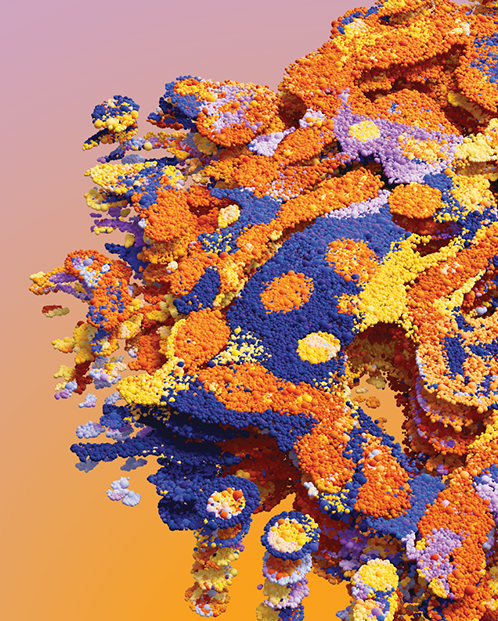We highlight innovative technologies here that are being developed into products, with a focus on ease-of-use and sustainability. Illumina keenly pursues innovation by prioritizing internal research and development in our roadmap, continually competing against ourselves to create even better products.
Illumina innovation roadmap
Our technology innovation and product development roadmap is designed to enable researchers and clinicians to turn big dreams into impactful genomic discoveries, improving lives and changing the course of diseases globally
Sign up for updates
Your email address is never shared with third parties.
Featured Illumina R&D innovations
Our innovation roadmap is part of a proven track record of biological solutions that empower researchers to perform studies at the throughput, scale, and price that meets their research objectives.

Expanding possibilities in genome sequencing
Illumina pushes the boundaries of genome sequencing with innovations that simplify workflows and unlock new discoveries. Watch from ASHG 2025 as we expand the limits of what’s possible with Constellation mapped read technology, the Illumina 5-Base solution, multiomics, and bioinformatics.
Explore current innovations
Constellation mapped reads
Estimated availability*: 1H 2026
Constellation mapped read technology uses a highly simplified NGS workflow that enables on-flow cell library prep and standard short reads with cluster proximity information.
This innovative method eliminates standard library prep and unlocks long-distance genomic information. Early testing demonstrates enhanced mapping of challenging genomic regions, ultra-long phasing (Mb), and improved detection of large structural rearrangements.

Spatial transcriptomics
Estimated availability*: 1H 2026
Illumina spatial technology will enable a unique end-to-end spatial transcriptomics solution for use with Illumina high-throughput sequencing systems.
Illumina spatial technology captures poly(A) motifs of RNA transcripts on an advanced substrate for hypothesis-free analysis of gene expression profiling. This design also allows easy application of the technology across any eukaryotic species.
Streamlined and powerful data analysis is being developed for Illumina Connected Multiomics paired with a custom DRAGEN pipeline. The complete workflow will offer image integration, machine-learning analysis tools, access to a purpose-built spatial browser for visualizations, future multiomic integration, and data management.

5-base solution for methylation studies
Products available to order as of October 15, 2025
The Illumina 5-base solution is delivering simultaneous detection of genetic variants and methylation patterns in a single assay.
Novel chemistry converts 5-methylcytosine (5mC) to thymine (T) in a simple, single step. The streamlined workflow includes optimized library prep that’s complete in less than a day† and easy-to-use analysis for dual genomic and epigenomic annotations and visualizations.
Future technology expansions will include compatibility with automation and FFPE tissue.

Multiomic data analysis for biologists
Illumina Connected Multiomics is now available to order.
Illumina data analysis technology enables an environment where researchers can combine different omic types such as transcriptomics and proteomics. The technology will also support multimodal analysis, including spatial and single-cell data.
Outputs from DRAGEN secondary analysis for Illumina multiomics assays will be automatically transferred to Illumina Connected Multiomics, optimizing data accuracy across the sample workflow. This end-to-end approach streamlines multiomic analysis, providing biological insights and publication-ready visualizations.

Related resources

Innovations driving the multiomics revolution
Watch as Illumina introduces revolutionary next-generation sequencing (NGS) and multiomics technologies at AGBT 2025—engineered to deliver deeper insights, accelerate discovery, and push the boundaries of what’s possible in genomics.
Introducing Illumina spatial technology
Introducing Illumina spatial technology
Building on our expertise in flow cell surface development and manufacturing, Illumina spatial technology will provide highly sensitive whole-transcriptome coverage with unprecedented resolution, giving researchers clarity without compromises.
Perspectives on the Illumina 5-base solution
Perspectives on the Illumina 5-base solution
Dr Cande Rogert explores the Illumina 5-base genome solution for methylation profiling and variant detection with DRAGEN analysis.
Multiomics multiplies your discovery power
See how you can use multiomics to better connect genotype to phenotype and obtain a full cellular readout not found through single omics approaches.
Multiomics multiplies your discovery power
Your email address is never shared with third parties.
Be among the first to know
Interested in learning more about these technologies? Sign up to receive updates.
Speak with a specialist
Your email address is never shared with third parties.
* Product availability estimates are rough timing estimates that are subject to change.
† Single-day library prep applies to the whole-genome sequencing version of the kit.
References
- Data on file. Illumina, Inc. 2025.


